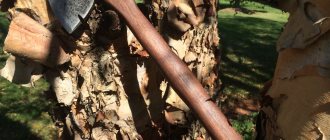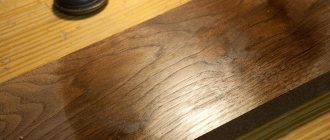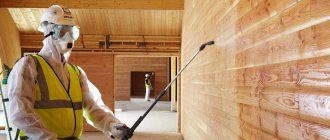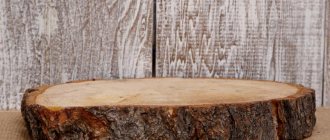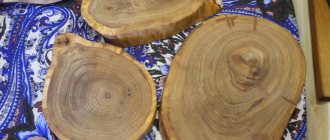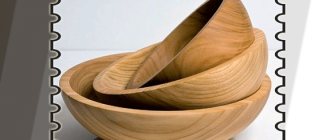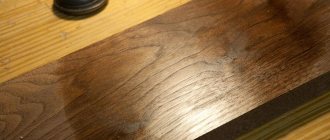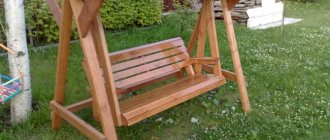Wood impregnation is one of the main components when building a house. The variety of impregnations on the market is enormous, so it is important to approach this issue responsibly. If you choose the wrong solution, there is a chance of getting damaged wood in the future, which will subsequently lead to the destruction of the house.
The main criterion for choosing impregnation is its purpose. Some formulations help fight fungi, moisture or insects.
There are many ways to help prepare wood impregnation with your own hands. At the same time, they are not inferior to branded analogues .
What destroys a tree?
Wood is an extremely unstable material that is destroyed due to exposure to external factors. We are talking not only about cases where houses are built entirely from wood, but even about furniture. The main reasons that contribute to the destruction of wood are:
- clay bacteria;
- fungi;
- grinder beetles;
- moisture.
Clay bacteria can weaken the structure of wood in a short period of time, and fungi, even after they are removed, leave dark spots. A humid environment produces mold spores that destroy wood products. In addition, mold can cause deterioration in human health.
Fortunately, you can increase resistance to such external factors with the help of special antiseptics . They must be used at every stage of house construction, as well as:
- during the production of lumber;
- during the production of furniture, building materials from wood;
- at high humidity.
What is impregnation and why is it needed?
Impregnations are commonly called liquid mixtures designed to protect wood from the harmful effects of moisture, sunlight, temperature changes, as well as harmful insects and other organisms (fungus, mold).
The first impregnations appeared quite a long time ago. People who use wood as a building material have always looked for ways to protect it from adverse weather conditions and various pests. Thus, in Rus', for a long time, wood was coated with linseed oil, waxed with beeswax or coated with tar. Oiled rock became less susceptible to rotting, but continued to require regular maintenance and renewal of the protective layer.
Modern compositions are most often made on the basis of complex chemical compounds and are designed for 18 different classes of operation. They are absorbed quite easily, last a long time and do not change the appearance and texture of the wood (except for cases where decorative purposes are set before impregnation). Despite their synthetic origin, today's products are quite environmentally friendly and safe. When properly selected, they fully cope with the complex task of protecting various species and, among other things, are able to protect the material from fire, as well as make the appearance of the wood even more attractive and impressive.
Types of antiseptic impregnations
Wood preservatives are made on a water or oil basis using organic substances. Impregnations that are environmentally friendly are very popular. This allows you to use protective agents for processing building materials or furniture in the house. The basis of the composition is chosen depending on the type of wood.
Primer impregnation is most often used immediately during wood production. It allows you to save material from the wood being processed. In addition, it creates a smooth surface for coating with varnish or paint. Primer impregnation allows you to apply all layers of paint or varnish evenly and quickly, and also protect the material from moisture.
If it is necessary to give the wood a different shade, then color impregnation is used during processing. This composition is called stain. It emphasizes and highlights the structure of the wood and changes it to the desired shade.
There is a wide variety of multifunctional impregnations that:
- protect the material from high temperatures;
- prevent wood-boring beetles from destroying wood.
Water-based antiseptics are used more often when applied independently. Such compositions dry within a few hours, while analogues with a high content of organic solvents are absorbed into the material for 2–3 days . True, you can use an additional component, namely nitrocellulose, which ensures rapid drying in 10–15 minutes.
The water-based base is not only characterized by quick drying, but also by characteristic properties that make it possible to highlight the structure of the wood, protect it from sunlight and also impart dirt-repellent qualities. When applying it, only basic skills are required, since water-based impregnation does not leave streaks on the surface.
Among all the advantages of water impregnation, its protective qualities are also highlighted. It allows the wood to acquire properties that neutralize the spread of moss or fungi.
To apply water-based impregnation yourself, you should purchase in advance:
- nitro thinner;
- colorless azure paint;
- soil for wood;
- wood brush;
- device for spraying the solution;
- brush.
Reviews
We selected eco-friendly and natural impregnations for the children's room. Agreed on . The color of the wood remained natural and after 2 years of use, the floor did not deteriorate. Olga Vsevolodova (5/5)
If you use it, then only belinka. After 3 years of use, the floor remained like new, thanks to good protection.
Grade:
Anatoly
“Pinotex” turned out to be quite good, but the only drawback was the poor absorption of wood impregnation. All scratches immediately become clearly visible. Grade:
Maria
Tikkurila burns out quickly. Pinotex was more durable when used. Grade:
Sergey
Acrylic paint does not adhere well to Pinotex impregnation, leaving only streaks. Grade:
Galina
"Aquatex" impregnation faded in the sun in 3 years. Otherwise everything is fine. Grade:
Egor
I impregnated the parquet board with Aquatex. Now resists scratches due to furniture movement well. Grade:
Maksim
Applying impregnation to wood with your own hands
Before you start working with impregnation, you should prepare the wood. Exotic woods are treated with a nitro thinner, while regular, local wood is smoothed with a brass brush. After preparing the surface, the impregnation is applied to the material, having previously been diluted. The composition can be applied using a brush or special sprayers .
It is important to choose the right impregnation color. If the wood has an uneven texture, then it is better to use dark-colored compounds.
Coniferous or deciduous species require additional impregnation in the form of a primer. In the final part, the material is coated with varnish or paint.
How important is impregnation for wood?
Helpful information:
- How to choose a gas tank for a private home
- What to choose, a drill or a hammer drill?
- How to choose impregnation for concrete
- How to choose the right wallpaper
- Which fence to choose?
- Concrete crown: what is it and how to choose
To be convinced once and for all of the need to protect wood that is constantly exposed to an aggressive external environment, you just need to compare photographs of identical structures - treated with a special compound and left in their original form.
Preparation of bitumen-based impregnations
Anyone, even those without special skills, can prepare impregnation with their own hands. Often, when preparing the composition at home, bitumen is used as a base. This recipe allows you to create an impregnation with excellent antiseptic properties and a high degree of impregnation of the wooden material. The composition is capable of penetrating 7 mm deep into the wood. Do-it-yourself bitumen antiseptics have no analogues on the market.
This composition can be used even on poorly dried wood. Impregnation easily penetrates wood fibers.
The cooking process itself is simple, but first you need to prepare the following materials:
- bitumen;
- kerosene;
- mastic;
- diesel fuel;
- bucket;
- electric saw;
- diesel fuel.
You need to place a bucket of bitumen, grades M-5 and M-3, on the electric stove. The bitumen is brought to a boil and bubbles appear on the surface. After this, diesel fuel is poured into the container and stirred until liquid. The main thing here is to achieve a consistency that allows the composition to remain liquid even when cold. When using kerosene, the bitumen is first crushed and mixed with kerosene until thick, and only then placed on the stove to heat.
This impregnation perfectly protects the wood surface from moisture, the formation of fungi and mold. In addition, bitumen impregnations form a layer onto which oil products and enamels are easily applied . The only exceptions are nitro paints or nitro varnishes. The bitumen coating process is divided into three stages: primer and two paintings.
Using biocides to protect wood
Additional treatment with preservatives, which are used directly in soil or water-based compositions, helps preserve the wood. Antiseptics include chromium, boron, fluorine, zinc or copper. Such biological compositions are easy to use and can be prepared with your own hands. You just need to purchase a special container for preparation and the required amount of antiseptic. The finished composition is obtained by mixing concentrate and water in the correct proportions in a container.
Wax and special oils are also isolated from effective concentrates . Applying oil to the surface of wood makes it resistant to gases, water or steam. Wax is able to protect against the penetration of air currents, which, although they do not destroy the wood, contribute to the disturbance of the temperature regime in the house.
Flaxseed oil has established itself as one of the best products for wood processing. It is the basis for the preparation of a variety of antiseptics with a wide variety of protective properties. Basically, linseed oil helps the impregnation to absorb into the wood faster and also improves the appearance of the material.
Material properties
To choose a specific product to impregnate the surface of the wood, you should study the properties of the product. Wood Protect, a decorative impregnation for wood protection, has the properties of creating a layer that effectively withstands the effects of natural factors, and it also has the property of repelling dirt. The basis is an alkyd-acrylic solution.
In addition, the composition contains hard wax and natural oils, which serve to impart water-resistant properties and create a durable layer. These components help to obtain a reliable coating that is also environmentally friendly and can be used indoors and outdoors.
The layer density is high, for this reason it can be easily applied to vertical surfaces, drops will not form on the surface, and the impregnation will be evenly distributed on the ceiling.
Wood Protect - decorative impregnation for wood protection has the properties of creating a layer that effectively withstands the effects of natural factors.
Use of fire retardants
When building a wooden house, it must be protected not only from mold, fungi or moisture, but also from fire. For this purpose, special flame retardants are used. This does not mean that the wood will eventually become fireproof, just that the time it takes for the fire to spread increases and it is much easier to extinguish such material.
In order to give the wood minimal fire-resistant properties, the material is treated with two types of impregnations : water-based compositions containing salts and LMC. The fire retardant composition can be applied to any wooden surface, without worrying about the environment, since all components are organic and harmless.
Before you start, you need to prepare the following materials:
- alkali-based cleaning solution;
- bucket;
- brush;
- solvent.
Before applying the refractory composition to wood, the material is cleaned of dirt and dust. It is important that the wood has a moisture content of no more than 30%. Impregnation is applied using a brush, evenly over the entire surface. The work is carried out at a temperature not higher than +5 degrees. Hands must be protected during operation.
Folk remedies
There are a lot of folk tips and recipes (inexpensive and effective) for treating walls, ceilings and other structures against rotting. Some impregnation compositions are very easy to use and inexpensive.
- The protection method is based on the use of vegetable oil and propolis, which are mixed in a 3:1 ratio. The resulting solution is applied to wood, previously cleaned of dirt and dust. The method is simple and effective if the task is to neutralize harmful microorganisms. But such impregnation is not fire-resistant. On the contrary, it supports combustion well.
- Copper sulfate. This is a blue granule powder that must be diluted with water. The solution (one percent) is applied to the cleaned surface with a brush, sponge or sprayer. This impregnation is very effective, since copper sulfate kills all bacteria and fungi and penetrates deep into the structure of the wood. The only negative is that the solution takes a long time to dry (10-20 days depending on the temperature).
- Previously, tar was used to coat the lower crowns of log houses. Later they began to use hot bitumen. A good impregnation option in terms of efficiency, but as far as safety and environmental friendliness are concerned, there are many questions here.
- Machine oil. At one time, wood processing was used very often, and this helped in the fight against almost all negative factors related to the protection of lumber from rotting. But the oil burns well, which has caused more than one fire. So it was subsequently abandoned, although this folk method is still used.
- Finnish method. The technology got its name from the name of the country, because this method is still used in Finland. It is based on a mixture of several ingredients: copper sulfate, slaked lime, salt and flour. All components are mixed in certain proportions and diluted with water to a paste. The treatment is carried out in two layers, the second is applied to the first after it has completely dried. The paste impregnation method is harmless and effective. Today it is used mainly for processing wooden fences and roofs, because the paste is practically not washed out with water.
There is also a method that does not involve impregnation and consists in firing boards or logs of wood. Lightly moistened wood is burned with a blowtorch, which kills all harmful organisms and creates protection from moisture and rot. That part of the fence posts that will be in the ground is often burned with an open flame from a fire. Burnt wood practically does not rot.
Making your own water mixture
Solutions of salts in water can be prepared without even having basic skills. All you need for this is heated water and the necessary components . In addition, before starting work, you should select one of the components. This may be sodium fluoride, iron or copper sulfate.
Sodium fluoride solution
Impregnation based on sodium fluoride can be made by simply mixing this component with hot water. The sodium fluoride content should range from 0.4 to 4 percent (50–400 grams per 10 liters of water). If the wood is processed indoors, then it is better to use less sodium fluoride.
The outside of the house, gazebos, fences and benches that are located on the street are treated with a solution containing a high content of the component. In order to visually control the application of impregnation, a small amount of potassium permanganate (potassium permanganate) is additionally used. It does not change the color of the wood and disappears immediately after drying. The solution is best applied using a spray bottle.
A solution containing copper sulfate
If necessary, treat pillars that go underground, use a solution with the addition of copper sulfate. In total, about 1–2 kilograms of the component are added to 10 liters of water. This proportion requires a long impregnation and drying time, but the quality of material protection is significantly improved. It is worth noting that copper sulfate significantly changes the color of the material, so everyone chooses the proportions for themselves. The less copper sulfate is used, the lighter the solution becomes, but at the same time the protective qualities decrease.
Protective compounds for external treatment
This category of antiseptics includes protective solutions for preparatory and finishing work.
Distinctive features of these solutions:
- The compositions have increased resistance to various influences of moisture and ultraviolet rays.
- They do not lose their quality due to sudden temperature changes.
- They are frost-resistant.
- Used for outdoor use only.
The benefits of homemade solutions
Do-it-yourself impregnation has many advantages .
- Lower cost.
- There is no chance of buying counterfeit products.
- Minimum level of toxicity.
- In the case of bitumen or oil solutions, the effectiveness of protection increases.
Branded antiseptics also have their advantages over DIY solutions.
- Easy preparation. Simply mix the prepared solution with water or solvents.
- Selective influence.
- Most often, homemade antiseptics are more effective.
- Simple wood processing.
Everyone ultimately decides for themselves what to choose. Branded antiseptics increase the effectiveness of protection, while homemade solutions can take a comprehensive approach to improving the stability of wood. In addition, cost is also a big factor, because when you prepare the impregnation yourself, you spend much less money. We must also not forget that solutions prepared by hand are used not only for processing wood outside the home. Furniture, doors, windows and other things made of wood in a house or apartment can be covered with an additional layer of protection and without worrying about the environment.
Features of impregnations for external and internal work
Impregnation for external and internal work generally faces the same tasks. The nuances that distinguish the compositions from each other include the possibility of their use at low temperatures, environmental friendliness, and resistance to ultraviolet radiation.
Thus, means for treating interior spaces and especially living space should increase the resistance of the fabric to high humidity and, as a result, rotting and not form a film that interferes with the natural air exchange of the material. Antiseptic properties should prevent the development of fungus, and bio-protection should protect against the appearance of insects. The set of tasks for internal impregnation also includes the need for decorative enhancement. The mixtures actively work to preserve the aesthetics of the texture and, if necessary, evenly change the color or tint the rock.
Since all functions must be performed with minimal harm to human health, the impregnation is based on the most natural ingredients: water, waxes, oils and gentle dyes. Particular attention is paid here to the release of harmful substances and the appearance of unpleasant odors.
Impregnation for exterior finishing requires more active protection, including not only protection from pests, fires and water-repellent properties. The extensive list of tasks also includes resistance to solar radiation, changes in atmospheric pressure and temperature, including resistance to freezing. Full protection and comprehensive interaction can extend the life of a tree for decades.
The complexity of the requirements for street impregnation determines its activity and aggressiveness, therefore long-term direct human contact with it is extremely undesirable.
Results
Today, the construction market offers a huge number of protective impregnations for wood processing. Each of them differs in composition, methods of use and effect.
When you need to make a choice in favor of a specific product, you need to understand: expensive does not always mean high quality, just as cheap does not always mean bad. If you purchase good impregnation, the money invested in the purchase of an antiseptic will pay off many times over.
Video - Which impregnation to choose
Rating of the best impregnations
| Photo | Name | Rating | Price | |||
| TOP 6 impregnations for work inside wooden structures | ||||||
| #1 | Pinotex Interior | ⭐ 4.95 / 5 21 - voice | Find out the price | |||
| #2 | Tikkurila Supi | ⭐ 4.9 / 5 12 — votes | Find out the price | |||
| #3 | NEOMID 430 ECO | ⭐ 4.85 / 5 14 — votes | Find out the price | |||
| #4 | Tex Biotex Classic Universal | ⭐ 4.8 / 5 6 — votes | Find out the price | |||
| #5 | Extra Aquatex with wax | ⭐ 4.8 / 5 16 — votes | Find out the price | |||
| #6 | Ecohouse | ⭐ 4.65 / 5 6 — votes | Find out the price | |||
| TOP 6 impregnations for exterior work | ||||||
| #1 | Tikkurila Eko Wood | ⭐ 4.9 / 5 18 — votes | Find out the price | |||
| #2 | Luxens | ⭐ 4.8 / 5 13 — votes | Find out the price | |||
| #3 | Pinotex Ultra | ⭐ 4.8 / 5 19 — votes | Find out the price | |||
| #4 | EXTREME CLIMATE | ⭐ 4.7 / 5 6 — votes | Find out the price | |||
| #5 | Dufa Wood Protect | ⭐ 4.6 / 5 10 — votes | Find out the price | |||
| #6 | Nortex-Disinfector | ⭐ 4.5 / 5 4 - votes | Find out the price | |||
| TOP 3 fire retardant impregnations for wood | ||||||
| #1 | NEOMID 450 | ⭐ 4.85 / 5 10 — votes | Find out the price | |||
| #2 | OGNEZA-PO-D | ⭐ 4.7 / 5 5 — votes | Find out the price | |||
| #3 | Senezh Ognebio Prof | ⭐ 4.4 / 5 13 — votes | Find out the price | |||
Which impregnation would you choose or would you recommend?
Take the survey
Extreme Climate
This is another best impregnation for wood of any species, which is water-based. The peculiarity of the composition is that it can be used for both internal and external surface treatment.
After antiseptic treatment, the tree is not afraid of rain, snow or sun rays. Since the product penetrates deep into the natural material, it is possible to prevent the appearance and proliferation of microorganisms. At the same time, the protective film allows air to pass through perfectly.
If you believe user reviews, the product dries quickly and does not have a strong odor.
Advantages:
Note!
Three-way valve in a heating system: instructions on how to choose and install correctly in a private home
How to seal a stove so it doesn’t crack from the heat, what solution: review of the most effective methods + instructions
Why the bottom of the battery is cold and the top is hot - let's look at the reasons. Review of recommendations on what to do and how to fix it
- universal use;
- effective protection from bad weather;
- The protective film has breathable properties.
Minuses:
- high cost;
- shortage in the retail chain.

